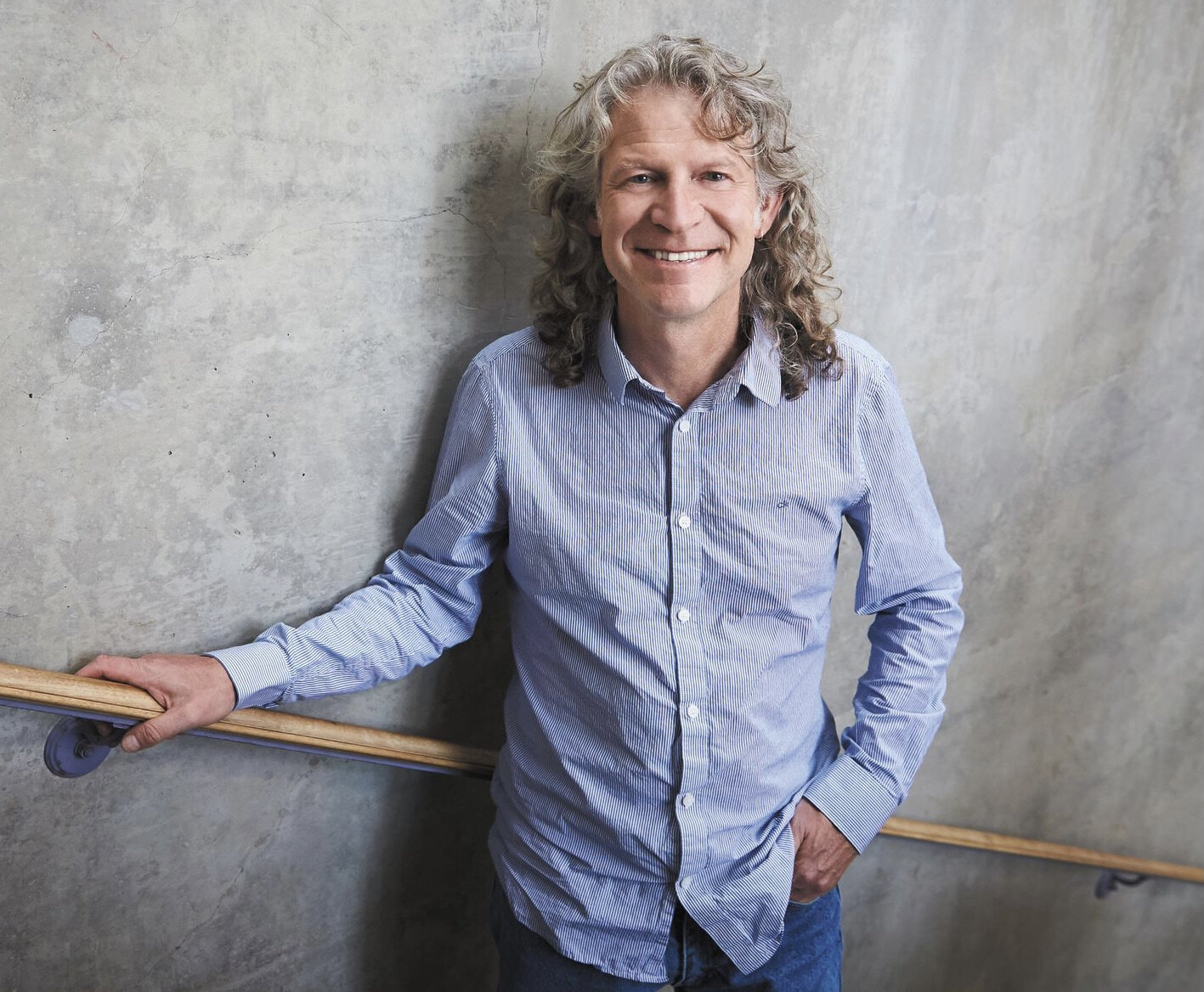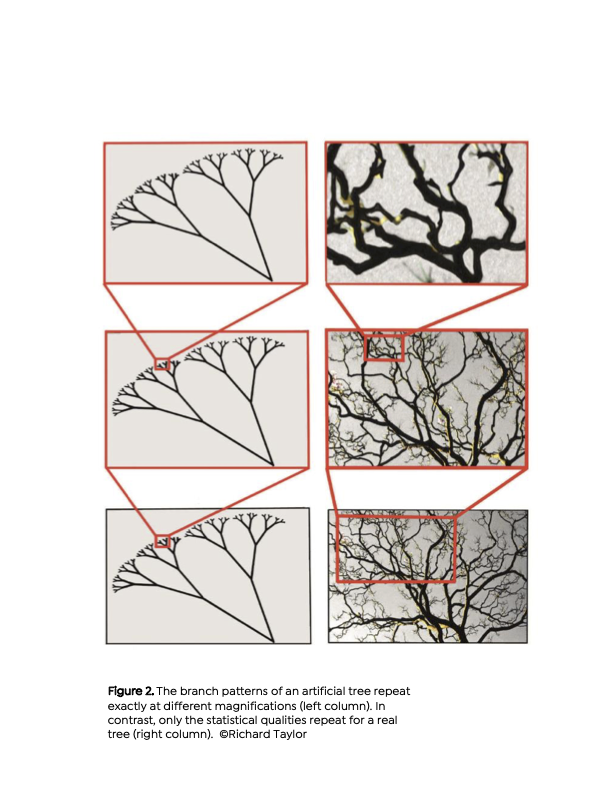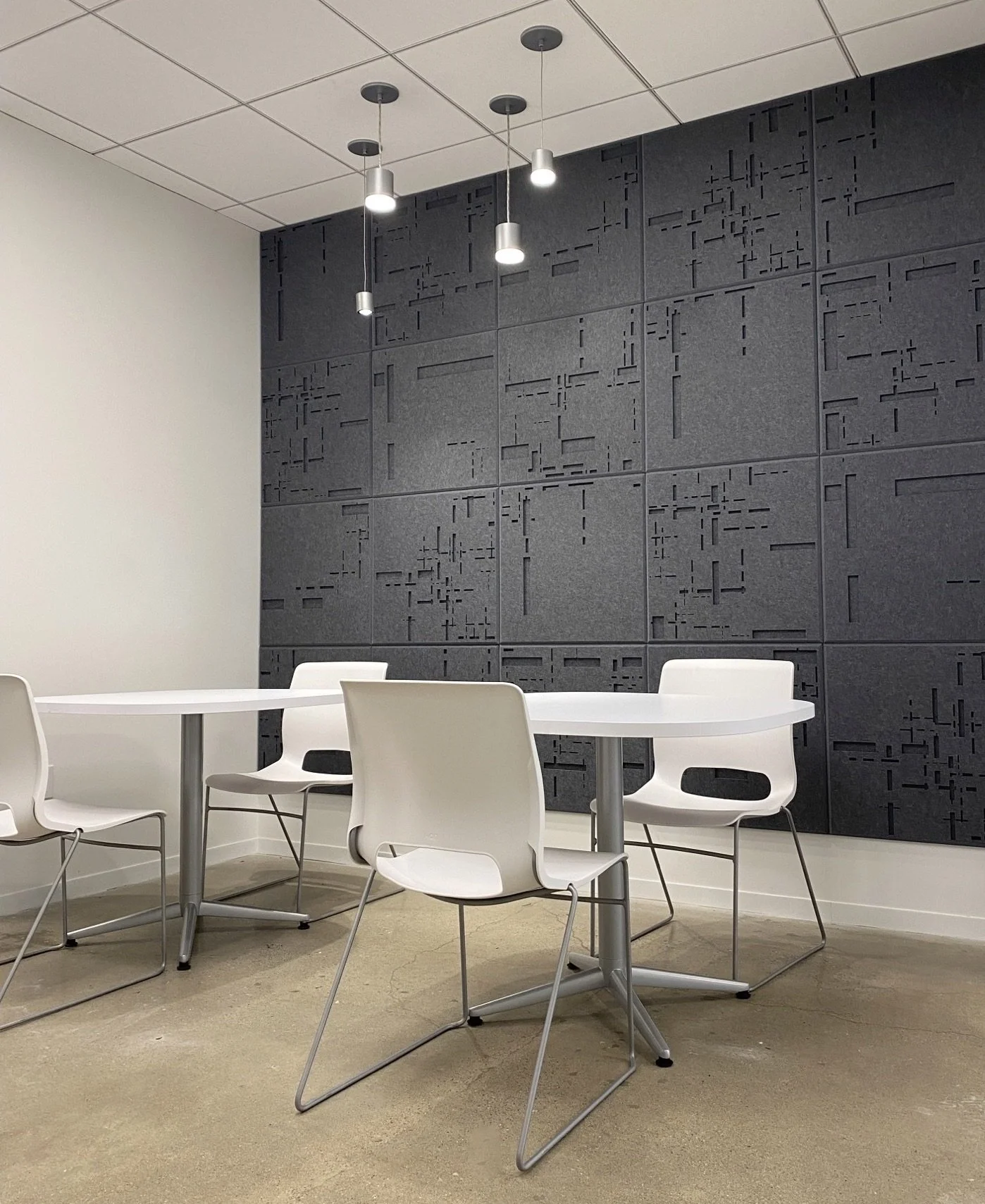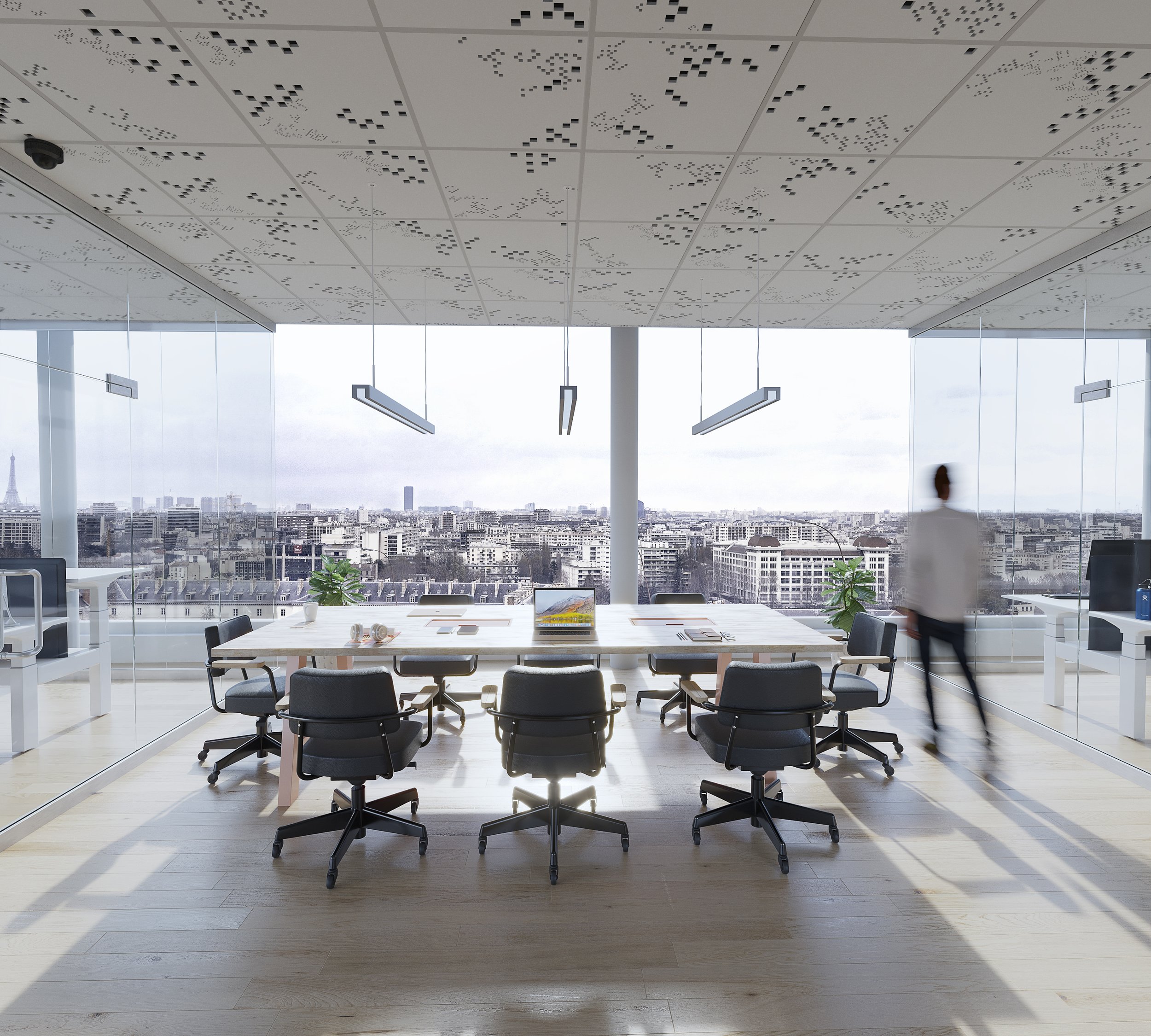Calm Collection
A product collaboration with 13&9 and Fractals Research.
The Calm Collection merges acoustic tile with fractal visuals to help reduce stress in indoor environments.
Research shows that the experience of seeing certain types of fractal patterns induces the same eye movements that occur when we view a natural landscape. This perceptual experience activates a stress-relieving response in our bodies, nurturing a sense of calmness and improving concentration. By combining natural fractal patterns with quieter acoustics, the Calm Collection helps you actively support well-being and productivity in your spaces.
13&9 Design
13&9 is a product design firm based on the partnership between INNOCAD architecture CEO Martin Lesjak and designer Dr. Anastasija Lesjak. 13&9 works holistically to create environments that balance people-place-technology, pursuing design strategies that are based on scientific analyses of stress-reduction concepts. One of their main areas of focus concerns research into perception and the effects of specific patterns that occur in nature. From this pursuit came 13&9’s partnership with one of the leading scientists in this field, Professor Richard Taylor from the University of Oregon and Fractals Research Laboratory. Together, their partnership is known as ScienceDesignLab.
Martin Lesjak and Anastasija Lesjak of 13&9© Sandra Mulder
ScienceDesignLab
The ScienceDesignLab partnership has led to the generation of a wealth of natural fractal patterns that can be embedded in interiors to nurture stress reduction. According to ScienceDesignLab, “The aim is to generate further patterns in the form of the Fractal Library that will find applications with architects, interior designers, and product manufacturers in diverse environments such as workplace, public, educational and healthcare facilities. We hope that through this commitment to fractal design, we will encourage well-being and improve diverse task performances through concentration restoration.”
The Science of Fractal Design
Scientists have been studying the healing qualities of nature for more than fifty years. Although pioneering, these experiments left a vital piece of the puzzle unsolved – what is it about nature that triggers these remarkable effects? Fractals are patterns that repeat at different scales, creating shapes of rich visual complexity – some examples include clouds, branches, and waves. Starting with a NASA-funded project aimed at keeping astronauts calm, Taylor’s experiments show that adaptation to nature’s fractals influences many stages of the human visual system—from how the eye moves when acquiring the visual data of fractal patterns through to how the brain responds when processing their characteristics. This has led to the “Fractal Fluency” model, which declares that human vision has become fluent in the visual language of nature’s fractals and can process their features efficiently, creating an aesthetic experience accompanied by a decrease in the observer’s physiological stress-levels.
Physics Professor Richard Taylor University of Oregon and Director of Fractals Research USA Physics Professor© Sandra Mulder
Fractal Facts
A prevalent form of fractal — a tree — is used to highlight their intrinsic visual properties. Fractals fall into two families — exact (Figure 2 left) and statistical (Figure 2 right). Exact fractals are assembled by repeating a pattern precisely at many scales. Randomness disrupts this repetition for statistical fractals and only the pattern’s statistical qualities repeat. Statistical fractals therefore simply appear similar at different scales leading to the term self-similarity. Exact fractals have been studied by mathematicians since the 1860s. They are scarce in nature and a small degree of randomness inevitably creeps in. Consequently, natural examples of exact fractals, such as snowflakes and Romanesco broccoli, lack the cleanliness of the mathematical versions.
Visual Impact of Fractals
Psychologists employ a parameter developed by the mathematicians to assess the visual intricacy resulting from the fractal pattern repetition. The fractal dimension D quantifies how the patterns at different scales assemble into the fractal image projected on the retina. For simple (i.e., non-fractal) shapes, D matches what we would expect for dimension: a smooth line has a D value of 1 while a completely filled area has a value of 2. The repeating patterns embedded in a fractal line cause it to begin to occupy space. Accordingly, its D value lies between 1 and 2. When the contribution of fine structure to this fractal mix is increased, the line gradually fills in the 2-dimensional surface of the retina and the fractal’s D value therefore approaches 2. The low content of fine structure within the low D fractals builds a very sparse and simple shape (Figure 3 top). However, as the D values move closer to 2, the increase in fine structure content creates a much more intricate, detailed shape (Figure 3 bottom). Because D charts the ratio of fine to coarse structure, it measures the visual complexity produced by the repeating patterns. Behavioral research confirms that people’s perception of complexity increases with D. Observers' stress levels were found to dampen by up to 60% when viewing mid-D fractals"
Design Methods
The success of the design strategy lies in the development of software operated both by the scientists in Eugene and the designers in Graz. At times, this allowed patterns to be developed on a 24-hour schedule – when designs were completed at the end of the Austrian day, the patterns were sent over at the start of the Oregon day. It is also worth emphasizing the expertise of the three teams – the “design police,” the “fractal police,” and the “manufacturing police” ensured that there were no weak links as the designs progressed towards their completion. As with all great inter-disciplinary endeavors, creativity was an emergent phenomenon beyond the capabilities of the individual teams. The design of the collection centered on the fact that natural scenes display ‘fractal composites’ whereby individual fractal objects (branches, water, clouds, etc.) visually merge to form the overall fractal pattern (Figure 4 - branches example). In addition to more closely capturing the essence of nature, fractal composites provided more flexibility to develop patterns that are appealing from a design perspective. To visualize the compositional principle underlying these fractals, the team explored the analogy of individual fractal trees combining to generate a fractal forest. Fractal trajectories called Lévy flights were used as the basis of the designs and these flights featured a fractal mix of trajectories with many different flight lengths (Figure 6). Much like a bird dropping a seed whenever it lands, the seeds then grew into fractal trees at the locations between the flight trajectories. A second motivation for the ‘bird flight’ composition strategy is that we know eye movements (Figure 5) follow fractal trajectories when viewing fractal patterns. These designs therefore placed the tree locations using the same fractal statistics that the eye adopts when viewing them.
Stress relief for a calming environment.
The Calm Collection merges acoustic tile with fractal visuals to help reduce stress in indoor environments.













